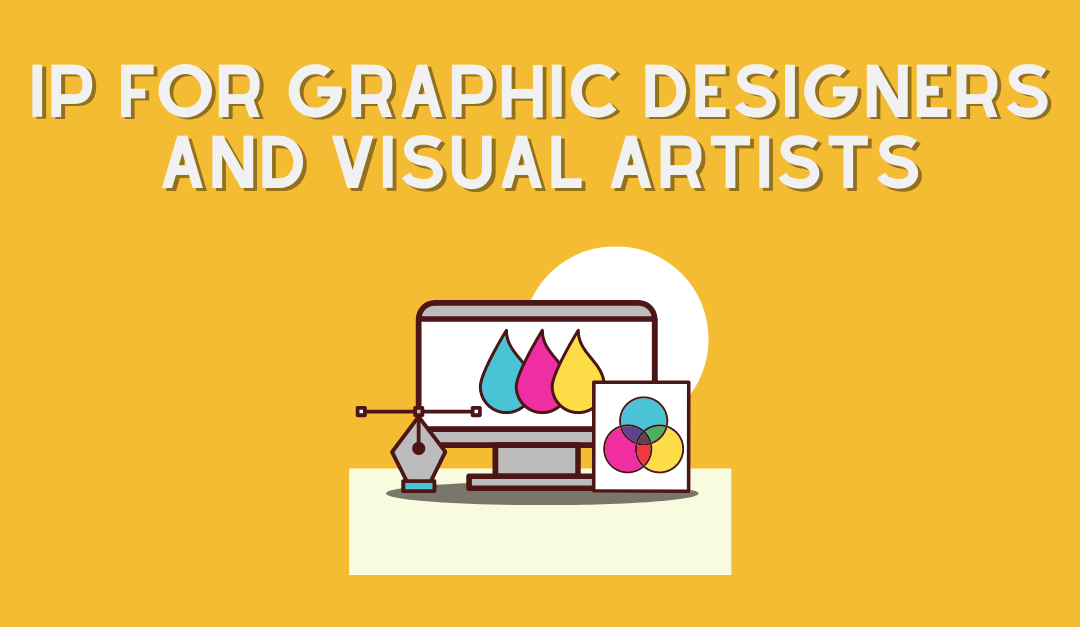Graphic designers and visual artists can leverage intellectual property (IP) rights to protect and maximize the value of their creative works. With the vast amounts of digital content being shared online today, there’s a high likelihood that others can use your work without giving you proper credit. By understanding graphic design intellectual property protections, you can better enforce your rights and retain control over your own creations. IP can aid your ability to profit from work that you sell, for example, to website designers, marketing professionals, retailers, and publishers.
In this article, we’ll take a look at common types of IP owned by visual artists, discuss works made for hire, and introduce how to sell IP to others through licensing and non-fungible tokens. We’ll also discuss some basic rules surrounding fair use, so you can ensure you’re respecting the rights of others.
Types of Intellectual Property for Graphic Designers
The most common forms of intellectual property acquired by graphic designers and visual artists are copyrights and trademarks. Copyright protections arise from the creation of an original work and trademarks distinguish your brand in the marketplace.
Copyrights
A copyright provides creators with the exclusive right to publish, reproduce, adapt, and share their original work with the public. Copyright protections are automatic (whether a work is registered or not) and last for the life of the creator plus 70 years. While designers and artists are afforded copyright protections automatically, there are some benefits in registering original works with the U.S. Copyright Office. Registration puts others on notice that you are ready to enforce your IP rights if necessary. By registering your works, you can secure statutory damages and attorney’s fees in the event you have to sue for infringement.
Even if you abandon an idea, you still retain the IP rights to the unfinished design. This makes it extremely important to keep detailed records of all creations (even if you don’t use them right away) because they may have commercial value down the road.
Trademarks
A trademark distinguishes your brand, products, and services in the marketplace – enabling consumers to identify yours from others. Trademarks can apply to a wide range of designs, from logos and taglines to commercial jingles. Like copyrights, you don’t have to register a trademark to have certain legal protections. Yet it may still be beneficial to register a trademark so it can be listed in the USPTO database – putting others on notice that you alone have the right to use your mark.
Work For Hire Projects – Who Really Owns The Work?
For many designers, one of the trickiest components of IP is understanding who actually owns the rights to a work. Many of your projects may be for an employer. The employer/employee relationship is one of the few situations where the creator is not the owner of IP rights for a project (the employer is the copyright holder). In a nutshell, if a company hires you to create designs or visual works, any work you create belongs to the company.
Another issue is joint ownership. If you work with other artists to finish a project, each person may have copyright protections for their contribution. If anyone wanted to reproduce the work, they would need to get permission from each designer who contributed.
Licensing Intellectual Property
Licensing is a method of transferring your IP rights to a client that enables you to get maximum value out of your creative works. You can give licenses to clients enabling them to use your work in a royalty free manner. You can also use managed rights where you define how your creation can be used. Either way, licensing your creative works is a good way to profit from your IP.
NFTs Offer a New Way to Profit From Your Creative Works
Non-fungible tokens, or NFTs, are unique digital files that serve as a unit of blockchain currency. NFTs could be issued for an image, video, audio, game, or other type of digital file. This new form of currency is taking the creative world by storm.
When artists sell files as an NFT, they receive revenue from the initial sale and any future sales. NFTs are comparable to royalties in the sense that they can be a source of ongoing, passive income, but they have the benefit of automatic tracking of future sales on the blockchain without the need for third party monitoring.
NFTs enable creators to collect royalties automatically and track future sales through blockchain’s verification system – which tracks all sales back to the original work. As this form of currency grows, it may provide yet another way for visual artists to profit from their creativity.
Understanding Fair Use
If you want to use someone else’s intellectual property or someone wants to use yours, permission is required unless the use of IP qualifies as “fair use.” Fair use enables one to use another’s original work, modify it, or create a derivative work. In general, fair use applies to the use of another’s copyrighted material for educational purposes, commentary, criticism, research, or reporting. Whether copyrighted material has been fairly used is not a simple analysis and often requires the insight of an attorney. Courts weigh four key factors when determining whether the use of another’s copyrighted material is “fair”:
- The purpose and character of the use. Using a copyrighted material for non-profit educational purposes may qualify as fair use. Using someone else’s work for profit or a business purpose is usually not considered fair use.
- The nature of the copyrighted work. Fair use is less likely to apply to creative, rare, and unpublished work.
- The amount of the work used. Using an excerpt or reproducing a small portion of a protected work may be considered fair use. Copying an entire original work, however, will likely not be considered fair use.
- The financial effect of the use. If your use of a protected work decreases the market value of the work, it is probably not fair use.
This is part 3 of our IP for Creatives Online series on graphic design and intellectual property. Check out part 1 on IP for Podcasting here, and part 2 on IP for Social Media Influencers and Content Creators here.
Disclaimer: Nothing in this article shall be construed as legal advice.
Download the Free Infographic Below
_________
The Michelson Institute for Intellectual Property, an initiative of the Michelson 20MM Foundation, provides access to empowering IP education for budding inventors and entrepreneurs. Michelson 20MM was founded thanks to the generous support of renowned spinal surgeon Dr. Gary K. Michelson and Alya Michelson. To learn more, visit 20mm.org.


can we become partners?
I’m a freelance graphic designer. A friend of mine hired me to make 4 menus for her food trucks. I sent all the menus to her pdf form for print. She know won’t pay me until I give her my original Adobe Illustrator files. Aren’t the original files my “intellectual property”?
She never said she wanted to pay me for the original files.